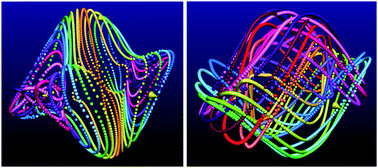Creating orbiting vorticity vectors in magnetic particle suspensions through field symmetry transitions—a route to multi-axis mixing
Abstract
It has recently been reported that two types of triaxial electric or magnetic fields can drive vorticity in dielectric or magnetic particle suspensions, respectively. The first type—symmetry-breaking rational fields—consists of three mutually orthogonal fields, two alternating and one dc, and the second type—rational triads—consists of three mutually orthogonal alternating fields. In each case it can be shown through experiment and theory that the fluid vorticity vector is parallel to one of the three field components. For any given set of field frequencies this axis is invariant, but the sign and magnitude of the vorticity (at constant field strength) can be controlled by the phase angles of the alternating components and, at least for some symmetry-breaking rational fields, the direction of the dc field. In short, the locus of possible vorticity vectors is a 1-d set that is symmetric about zero and is along a field direction. In this paper we show that continuous, 3-d control of the vorticity vector is possible by progressively transitioning the field symmetry by applying a dc bias along one of the principal axes. Such biased rational triads are a combination of symmetry-breaking rational fields and rational triads. A surprising aspect of these transitions is that the locus of possible vorticity vectors for any given field bias is extremely complex, encompassing all three spatial dimensions. As a result, the evolution of a vorticity vector as the dc bias is increased is complex, with large components occurring along unexpected directions. More remarkable are the elaborate vorticity vector orbits that occur when one or more of the field frequencies are detuned. These orbits provide the basis for highly effective mixing strategies wherein the vorticity axis periodically explores a range of orientations and magnitudes.


 Please wait while we load your content...
Please wait while we load your content...